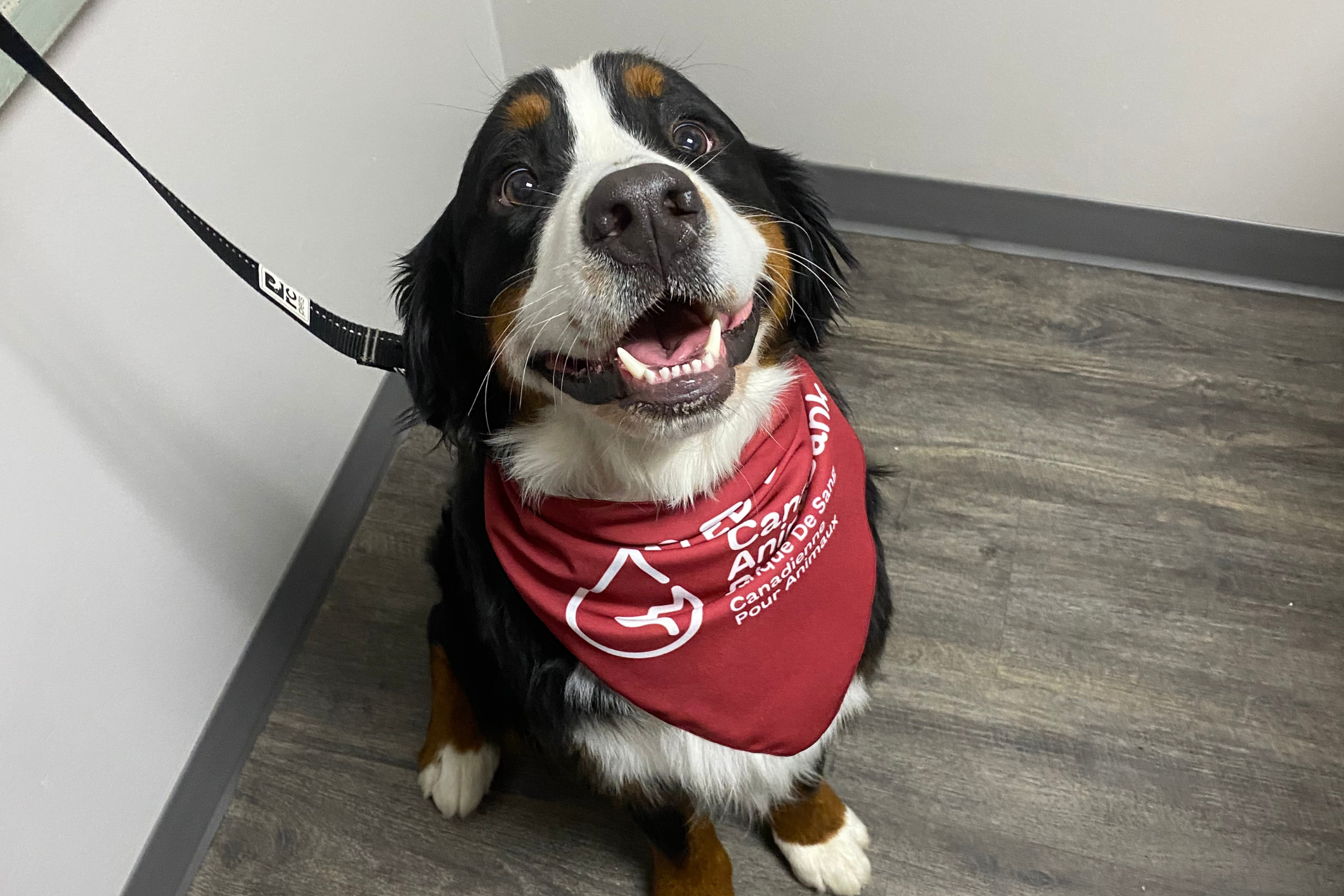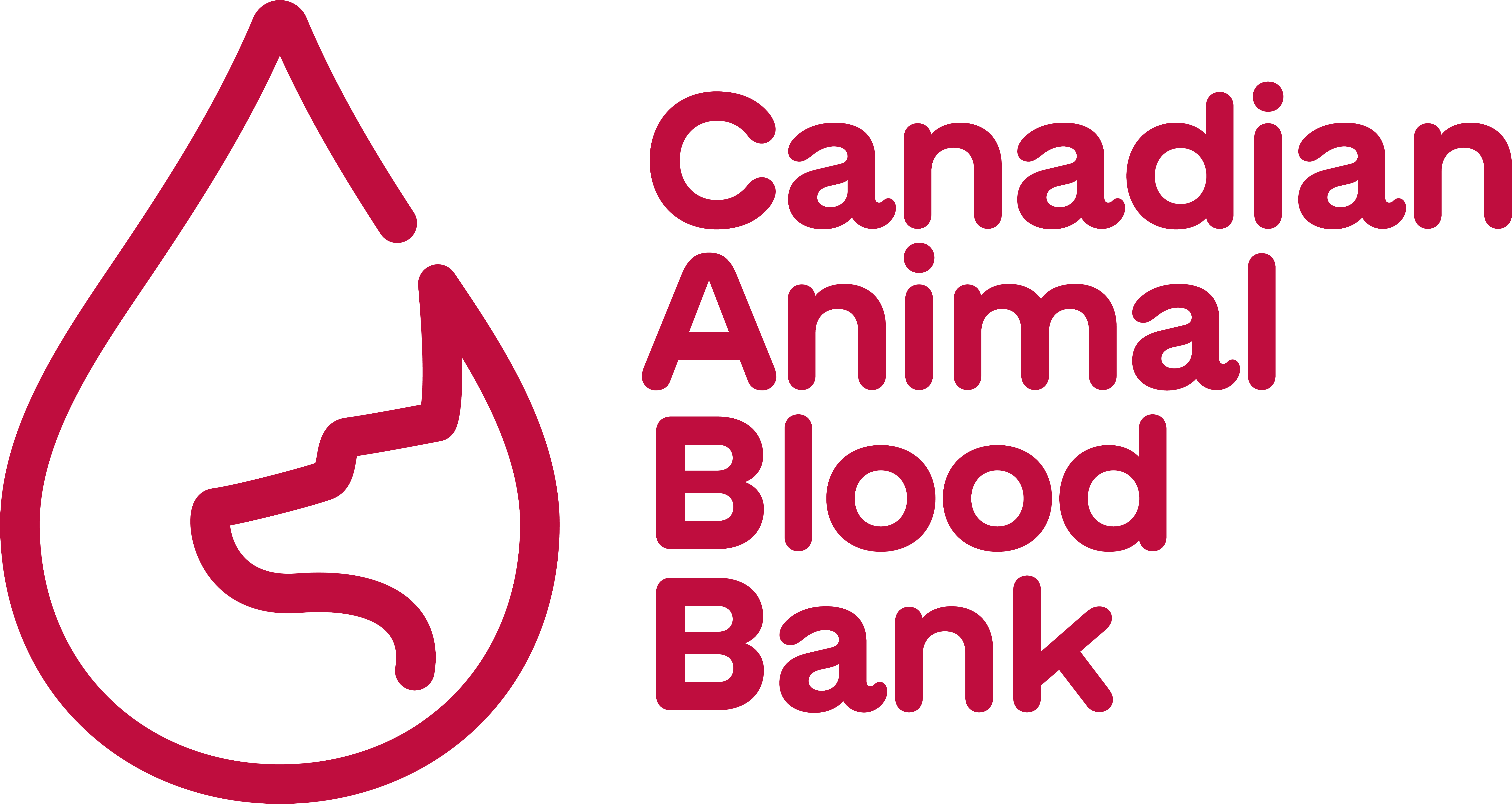
Canine blood grouping systems are defined by the expression of various antigens on the surface of the red blood cell (RBC). When an expression of a certain antigen is lacking, and a recipient has naturally occurring or induced alloantibodies, potentially fatal transfusion reactions can happen.
In dogs, there are more than twelve blood grouping systems defined but not all twelve are clinically significant when administering a blood transfusion. To be clinically significant, a particular blood group antibody needs to cause one of two problems: a hemolytic transfusion reaction or hemolytic disease of a fetus/newborn.
A hemolytic transfusion reaction is a serious reaction that occurs after a blood transfusion whereby the transfused RBCs are destroyed by the recipient’s immune system. Hemolytic disease of a fetus/newborn is a rare condition wherein the blood group antibodies or maternal RBCs cross the placenta during pregnancy causing fetal RBC destruction.
Canine blood groups have been studied for more than half a century, but none have been characterized at the biochemical or molecular genetic level. Instead, canine blood group systems have been identified using antisera from previously transfused dogs or specifically generated monoclonal antibodies.
Internationally recognized blood groups in dogs are DEA 1, DEA 3, DEA 4, DEA 5, and DEA 7, along with recently proposed blood grouping systems of Dal, Kai 1 and Kai 2, in recent years. All the blood groups are a two-allele system that have a positive and negative (absence of antigen) type.
The DEA 1 blood group system was formerly described as having two- alleles: DEA 1.1 and DEA 1.2. However, recent studies show that DEA 1.1 is just a varying strength of expression of DEA; therefore, DEA 1.2 and 1.3 are just a continuum of DEA 1 blood type.
DEA 1 is considered the most clinically significant blood group in dogs due to its very strong antigenicity. DEA 1 negative and positive blood groups are found in relatively equal proportions in the canine community but vary geographically. DEA 1 negative blood products can be transfused to DEA 1 positive patients, but DEA 1 positive products must not be transfused to DEA 1 negative patients. Although naturally occurring anti-DEA 1 isohemagglutinin does not exist, if a DEA 1 negative dog is exposed to DEA 1 positive RBCs, severe hemolytic transfusion reactions can occur when subsequent RBC transfusions are administered.
Controversy remains regarding the clinical importance of naturally occurring alloantibodies against DEA 3, DEA 5, and DEA 7. While naturally occurring alloantibodies have been identified for these blood groups, acute hemolytic transfusion reactions have not been reported. However, it should be noted that delayed hemolysis and decreased survival of transfused RBCs have been reported for all three blood groups.
While DEA 4 is a high frequency antigen found in 98% of dogs, naturally occurring anti-DEA 4 alloantibodies do not exist in DEA 4 negative dogs. Nevertheless, hemolytic transfusion reactions have been documented in DEA 4 negative dogs that have previously been sensitized with anti-DEA 4 antibodies. And while corresponding antibodies have been reported for the more recently discovered Dal, Kai 1 and Kai 2 blood groups, more information is needed to determine their clinical significance.
The only available in-house blood typing kits test for the presence of DEA 1 antigen. This limitation, coupled with needing more research on canine blood typing, makes it difficult to fully understand the clinical significance of all the blood typing systems.
Therefore, while transfusions are lifesaving procedures, is important to be aware of all possible transfusion-related adverse events. Pretransfusion screening such as blood typing and crossmatch testing can help minimize risk, along with close observation of your patient during and after a transfusion.
Written by Jessie Brown, BS, LVT who is a volunteer member of the Canadian Animal Blood Bank Education Advisory Committee and Blood Bank Director for the Veterinary Emergency Group.

